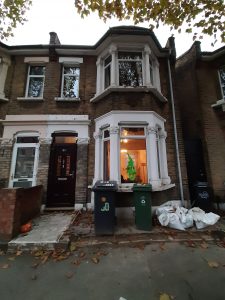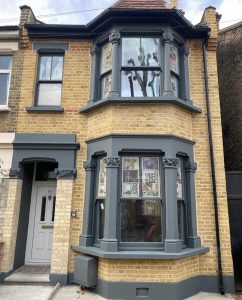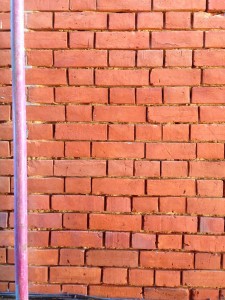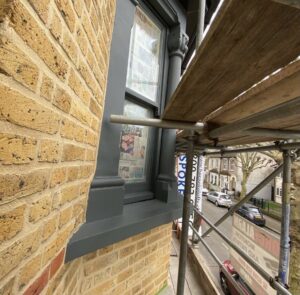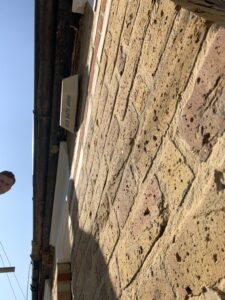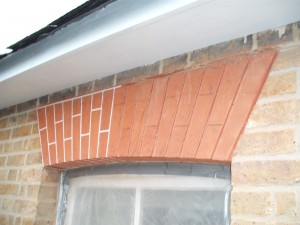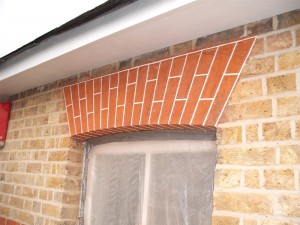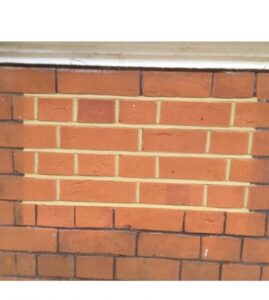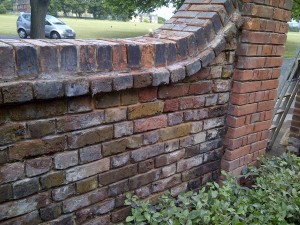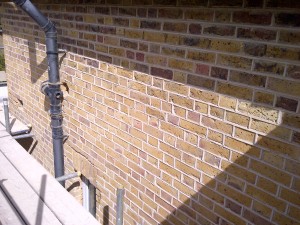Pointing/Repointing/Brick Mortar Removal and Replacement
“Brickwork restoration at its best”
Repointing is the process of renewing the pointing (the external part of mortar joints) in masonry construction. Over time, weathering and decay cause voids in the joints between masonry units (usually bricks), allowing the undesirable entrance of water. Water entering through these voids can cause significant damage through frost weathering and from salt dissolution and deposition. Repointing is also called pointing, or pointing up, although these terms more properly refer to the finishing step in new construction.
Masonry units are typically laid in a bed of mortar. The process of placing a masonry unit in a mortar bed causes the mortar to be extruded between units. This excess mortar is cleared and shaped before the mortar hardens. In some cases, the bedding mortar is meant to be seen and the mortar joint is immediately given a finish profile. In other cases, especially where the mortar is pigmented, the bedding mortar is removed from the joint before it hardens (usually a depth that averages about one inch), and then pointing mortar is applied in the void and shaped with a finish profile.
Process
Sound mortar normally does not need to be removed from a building during the repointing process, although such a practice is common. New mortar can be designed to match the colour and texture of existing mortar or to the clients preference. The repointing process begins by removing damaged pointing to a depth equal to or slightly more than the width of the joint, or to the point where sound mortar is reached. Depths greater than 2-1/2″ or 4 cm would be filled in several passes, allowing the mortar to cure for at least 24 hours. The joint profile would be as rectangular as possible as the new pointing mortar should be allowed ample opportunity to bond with the masonry unit.
Removal of old mortar between joints is done carefully to avoid damage to masonry units. On very old buildings with soft materials, such as under-fired brick, removal by hand is often the most effective to avoid damage. Hard Portland cement mortar is usually removed with a grinder or power circular masonry blade, taking care not to damage the masonry units. Vertical joints are done by hand or with small power chisels. See images directly below.
Poor repointing work often raises the level of the mortar joint above the face of the masonry unit, which causes the mortar edge to feather. Such a process is aesthetically undesirable and can cause performance problems as a thin layer of mortar will quickly erode. In addition, depending on the nature of the mortar, mortar that rises above the level of the face of the masonry unit can participate in damaging the arris or corner of the masonry unit. In these cases, deteriorated mortar is often not removed to a sufficient depth.
It is essential that the mortar used for repointing have similar performance characteristics to the original mortar used in a building. Such performance characteristics include permeability, compressive strength, and coefficient of thermal expansion. For instance, if a soft lime-based mortar was originally used, the most appropriate repointing mortar is likely to also contain a large amount of lime.
We Offer Many Different Styles Of Pointing/Repointing:
Flush pointing
Tuck Pointing
Weathered pointing (Also known as weather struck)
Recessed pointing
Ribbon pointing
We use either lime or cement based mortar mixes when we repoint to match the old or existing mortar colour so it has that original look and feature.
At Essex Brickwork and Repointing we only use proven quality materials and a highly skilled workforce with many years experience in the brickwork, repointing and restoration trades having worked alongside English Heritage Trust in numerous projects.
We cover the entire Essex and London areas including:
Essex: Basildon, Billericay, Braintree, Brentwood, Brightlingsea, Burnham-On-Crouch, Canvey -Island, Chelmsford, Chigwell, Chipping Ongar, Clacton-On-Sea, Colchester, Epping, Frinton-On-Sea, Grays, Great Dunmow, Halstead, Harlow, Harwich, Loughton, Maldon, Rayleigh, Saffron Walden, Southend-on-Sea, Stansted, Mountfitchet, Tilbury, Waltham -Abbey, Walton-On-The-Naze, West Mersea, Wickford, Witham and Wivenhoe.
London: Forest Gate, Leyton, Leytonstone, Wanstead, Walthamstow, Hackney, Homerton, Ilford, Stratford, Plaistow, Woodford Green, Wood Green, Tottenham, Lea Valley, Highams Park, Chingford plus more..


